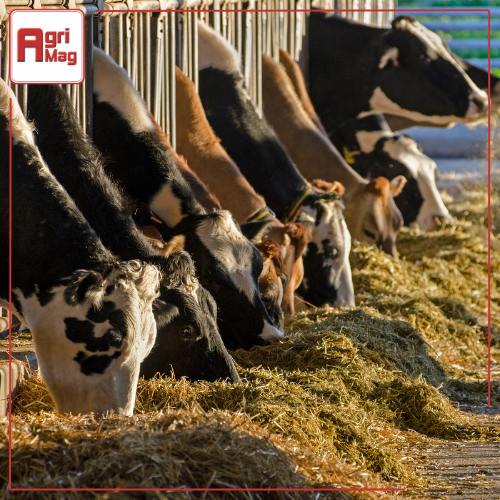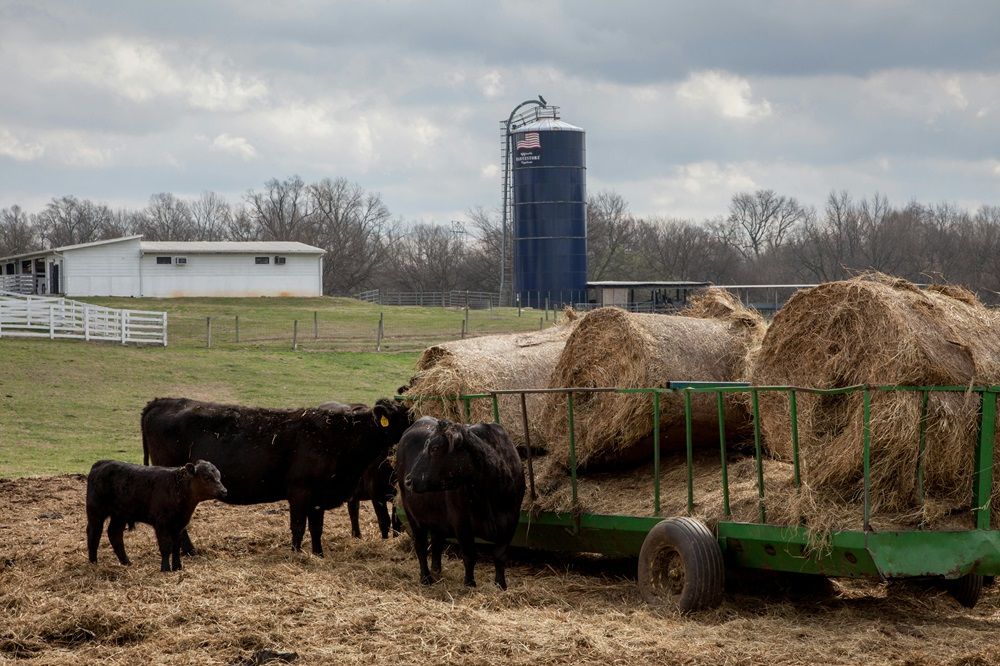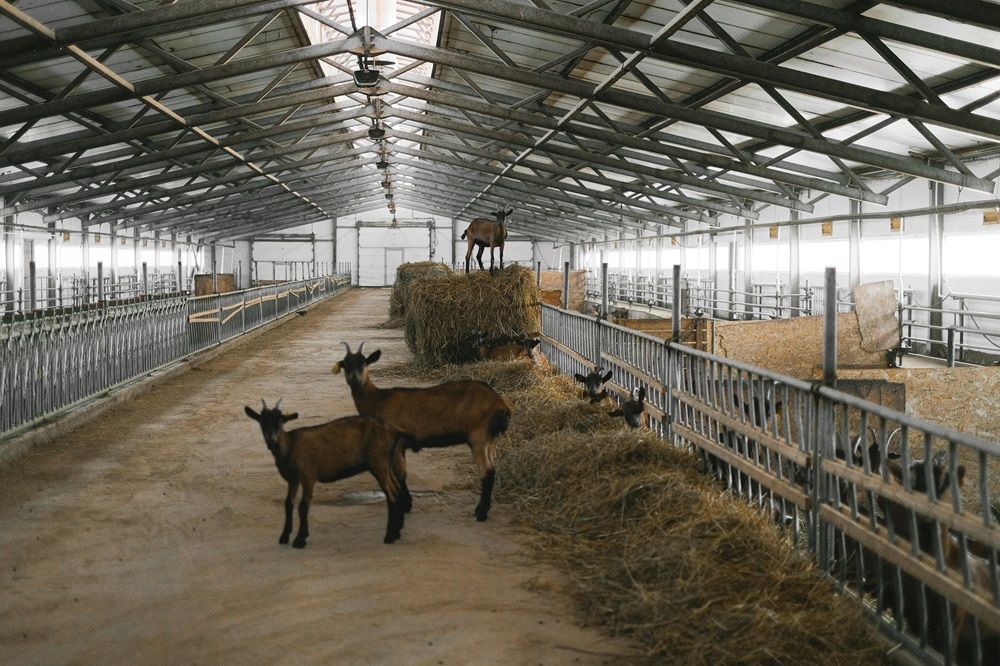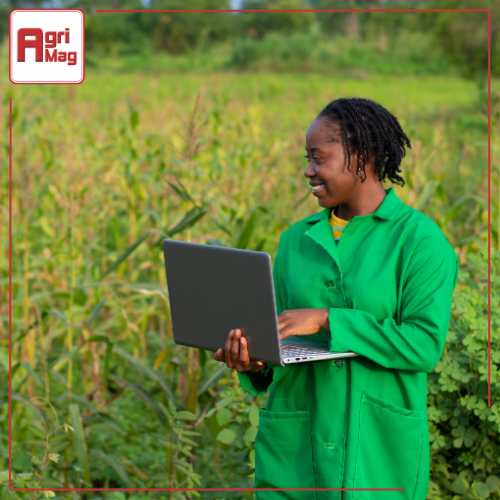
Why Winter Feed Management is Crucial for Livestock Health
Date: 18/06/2025
South African winters may not always come with snow, but they do bring real challenges for farmers, especially when it comes to feeding livestock. In many regions, from the frosty highlands of the Free State to the drier plains of the Northern Cape, winter grazing becomes scarce. That’s when proper winter feed management makes all the difference.
Planning ahead means your cattle, sheep, and goats will stay healthy and taken care of despite the cold. And with the right approach to livestock feed during winter, you can stretch your budget, avoid costly health issues, and ensure your animals thrive through the toughest months. If you're looking for reliable feed solutions and products, AgriMag has you covered.
 Photo by Mark Stebnicki on Pexels
Photo by Mark Stebnicki on Pexels
Why Winter Feed Management Is So Important in South Africa
Unlike countries with heavy snowfall, South Africa’s winter conditions vary, but the one constant is limited grazing. With veld growth slowing to a crawl and natural nutrition on the decline, animals depend heavily on what you provide.
Poor winter feed management doesn’t just mean a drop in weight. It can lead to:
- Weakened immune systems
- Delayed growth or fertility problems
- Lower milk or meat production
- Increased stress due to exposure and hunger
Understanding the Nutritional Needs of Your Livestock
Each farm is different, and so are the feeding requirements of your livestock. Cattle grazing in the Eastern Cape won’t need the same rations as goats in Limpopo. That’s why a one-size-fits-all approach won’t work. Instead, base your feeding plan on:
- Type of animal (e.g., beef cattle vs. dairy cows)
- Stage of production (e.g., pregnancy, lactation, growth)
- Local climate and available roughage
What is Roughage?
Roughage refers to fibrous plant material that forms the base of a ruminant’s diet. It’s essential for digestion and rumen (the first compartment of ruminant’s stomach) function. Common types of roughage include:
- Hay (dried grass or legumes)
- Silage (fermented green fodder)
- Crop residues (such as maize stalks or wheat straw)
Roughage stimulates chewing and saliva production, which helps buffer the rumen and supports healthy digestion.
Livestock feed during winter should ideally include:
- Roughage like hay, silage, or crop residue
- Energy sources such as maize meal or molasses
- Protein boosters like sunflower oilcake or lucerne
- Essential supplements for vitamins and minerals
How to Source and Store Feed for Winter Success
Farmers know that feed prices soar in winter, so preparation is key. Follow these step-by-step tips to secure your feed and keep it fresh.
How to Source Feed Efficiently
Plan Early
Calculate your animals' total feed requirements for the winter season based on number, weight, and feed intake. Start stocking up in late summer to avoid inflated prices.
Compare Suppliers
Use online marketplaces like AgriMag to shop around and get the best deals on bulk orders.
Diversify Your Feed
Don’t rely on one source. Mix different types of feed (e.g. hay, silage, energy concentrates) to balance nutrition and reduce risk.
Buy in Bulk
If you have the storage capacity, bulk buying can save money and ensure a steady supply through winter.
 Photo by Anna Shvets on Pexels
Photo by Anna Shvets on Pexels
Feed Storage Options
Storing your feed correctly is as important as sourcing it. Poor storage can lead to spoilage, pest infestation, and nutrient loss. Below are practical and commonly used storage solutions:
1. Grain Silos
Ideal for bulk dry grain storage such as maize, wheat, and barley. Airtight designs help maintain feed quality and keep pests at bay.
2. Feed Wagons
Although primarily used for transporting and distributing feed, many models offer short-term feed storage capabilities. They're especially useful for storing and mixing smaller batches of feed or concentrates.
3. Haymaking and Silage Equipment
Essential for preserving forage like hay and silage, this equipment includes balers, wrappers, and silage baggers. These tools help you process and store large volumes of feed safely and efficiently.
Modern feeding systems often come with built-in bins or hoppers, providing both automated feed distribution and short-term storage. They’re ideal for poultry, livestock, and wildlife management.
Don’t Skip the Supplements: They’re More Important Than You Think
Even the best-quality forage might lack essential nutrients during winter. Supplements help close the gap and support animal health.
Consider adding:
- Protein licks to maintain energy and body weight.
- Mineral blocks for bone development and immune support.
- Vitamins A, D, and E can offset what’s missing in dry forage.
- Molasses-based supplements to increase palatability and energy intake.
Monitoring Animal Health Throughout the Cold Months
Feeding correctly is one part of the equation, but equally important is consistently monitoring your livestock's health. Winter puts added stress on animals, and even with a good feeding plan, health problems can creep in if you're not paying attention. Here’s what to look out for and how to act fast when things go off track.
1. Body condition scores (BCS)
Regularly checking your animals' body condition scores (BCS) is a proven way to assess their overall health and nutritional status. This involves feeling for fat and muscle over the ribs, spine, and hips.
- Cattle and sheep: Aim for a BCS of 2.5–3.5 out of 5. On a scale from 1 to 5, where 1 means very thin and 5 means very fat, aim for a score between 2.5 and 3.5. This means the animal has enough fat and muscle to stay healthy during winter.
- Goats: Slightly leaner animals may still be healthy, but consistency is key.
- A drop in BCS can indicate that your livestock isn't getting enough energy or protein, and it might be time to revisit your rations.
2. Coat Condition and General Appearance
A healthy animal will typically have a shiny, well-kept coat. In winter, rough, dull, or patchy hair could signal:
- Nutritional deficiencies (especially minerals and vitamins)
- Internal or external parasites
- Poor shelter or excessive exposure to cold
3. Behaviour and Feed Intake
Animals should be active, alert, and eager to eat. Pay attention to:
- Feeding patterns: Sudden drops in intake can be an early sign of illness or digestive issues.
- Lethargy: Sluggish animals might be cold, sick, or underfed.
- Aggression or competition at feed troughs: This could mean there’s not enough space or rationing isn’t effective. Behavioural changes are often your first clue that something isn’t right.
4. Monitor Water Consumption
Cold weather can lead to lower water intake, especially if water sources freeze or become too cold. Dehydration reduces feed digestion and can lead to blockages or illness. Ensure:
- Constant access to clean, unfrozen water.
- Use of heaters or insulation in water troughs if needed.
5. Check for Signs of Cold Stress
Especially in young or old animals, cold stress can have serious impacts. Look for:
- Shivering or huddling in groups
- Laboured breathing
- Icy or wet coats
6. Track Performance Indicators
Depending on your operation, measure:
- Milk yield (in dairy cows or goats)
- Weight gain (in beef cattle or weaners)
- Reproductive performance (especially in pregnant animals)
Declines in these areas often point to feed imbalances, deficiencies, or general health issues.
When it comes to winter feed management, it’s not just about throwing hay into a trough; it’s about being strategic, attentive, and proactive. Your animals depend on you to make the right call, and with limited grazing during the colder months, the quality of livestock feed during winter becomes the cornerstone of their health and productivity. The good news? You’re not alone in this. AgriMag is your trusted partner. Explore the wide range of products listed on our website and get ready to take winter feeding to the next level, because healthy livestock means a healthy farm.
Categories:
Common category
Category Search:
Latest articles:

What to Look for When Buying a Skidsteer Loader for Farming

Why Planning Early for the Planting Season Pays Off

Why Winter Feed Management is Crucial for Livestock Health


